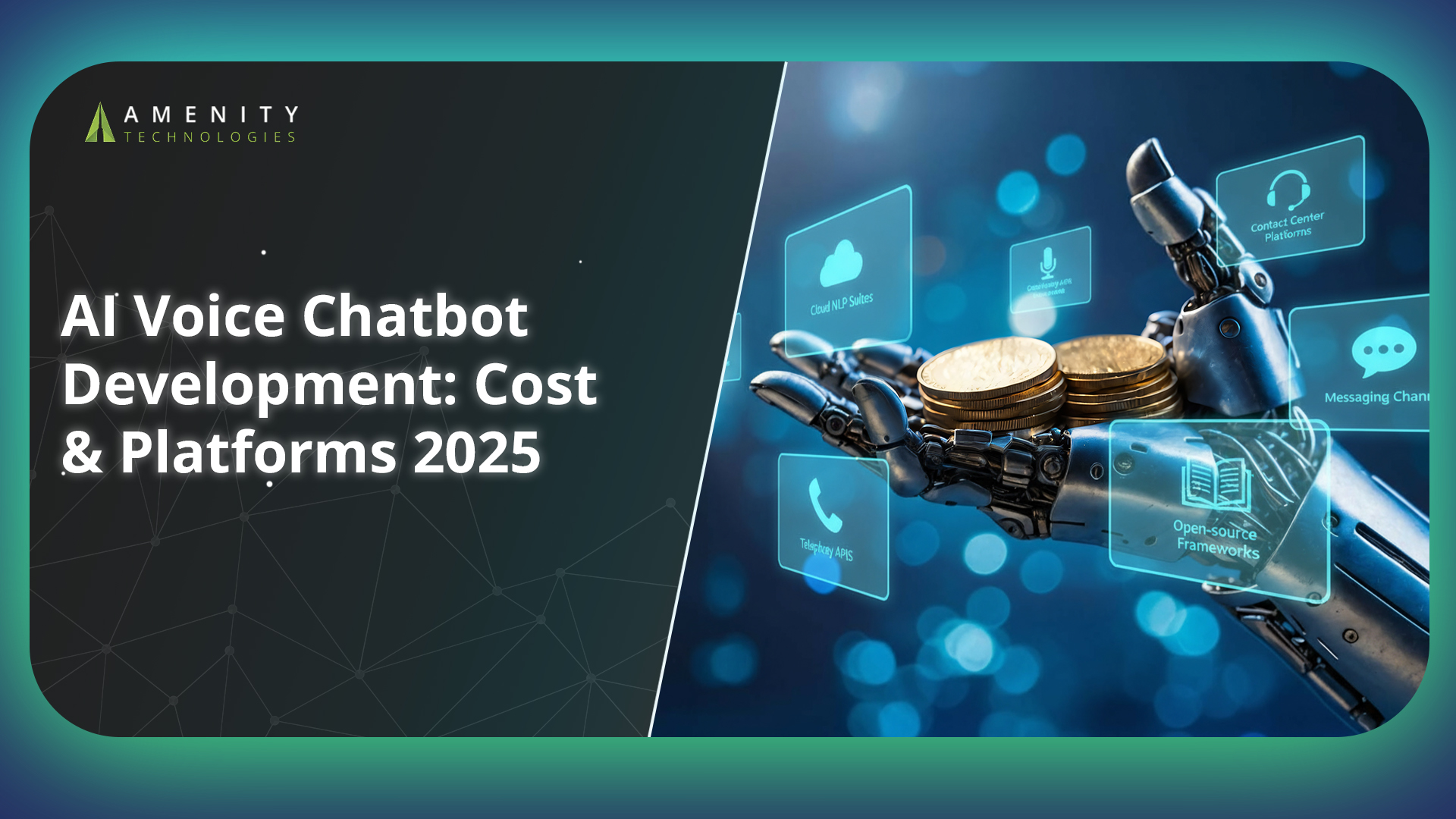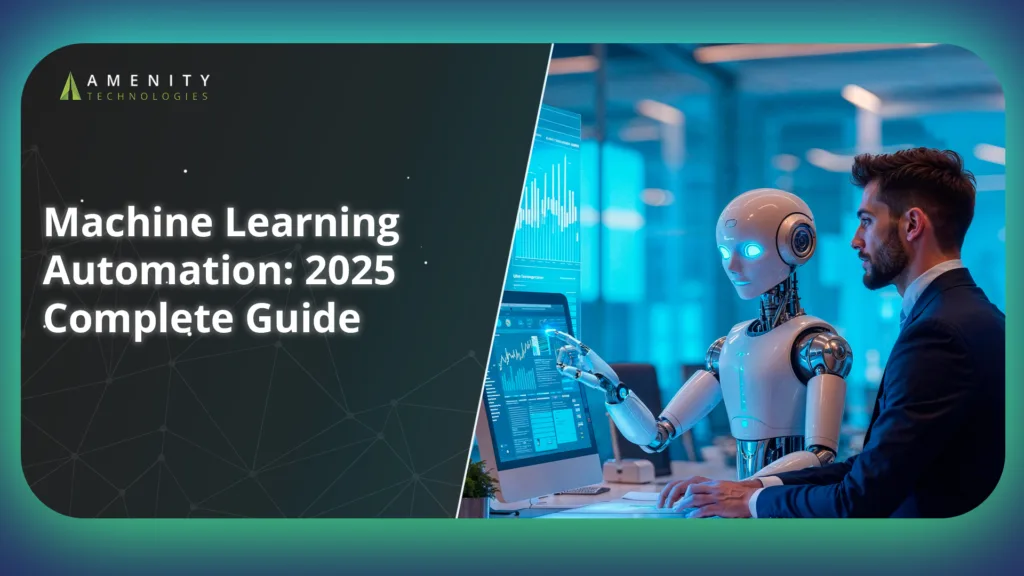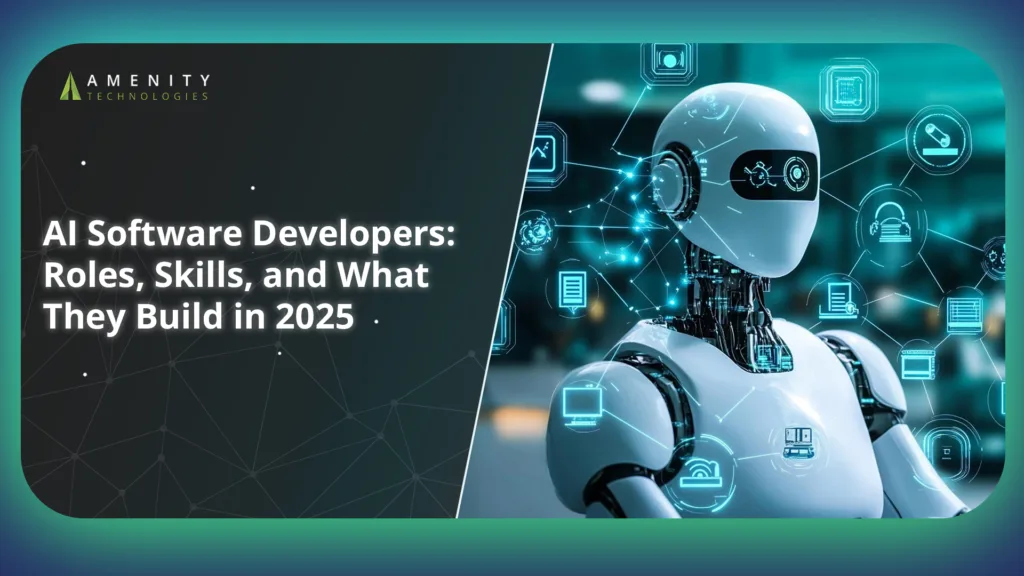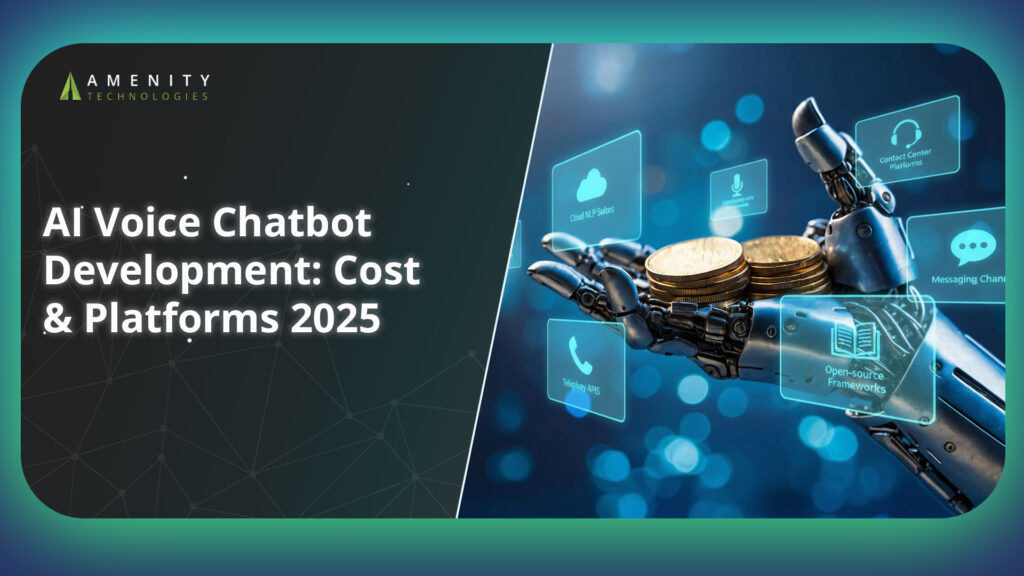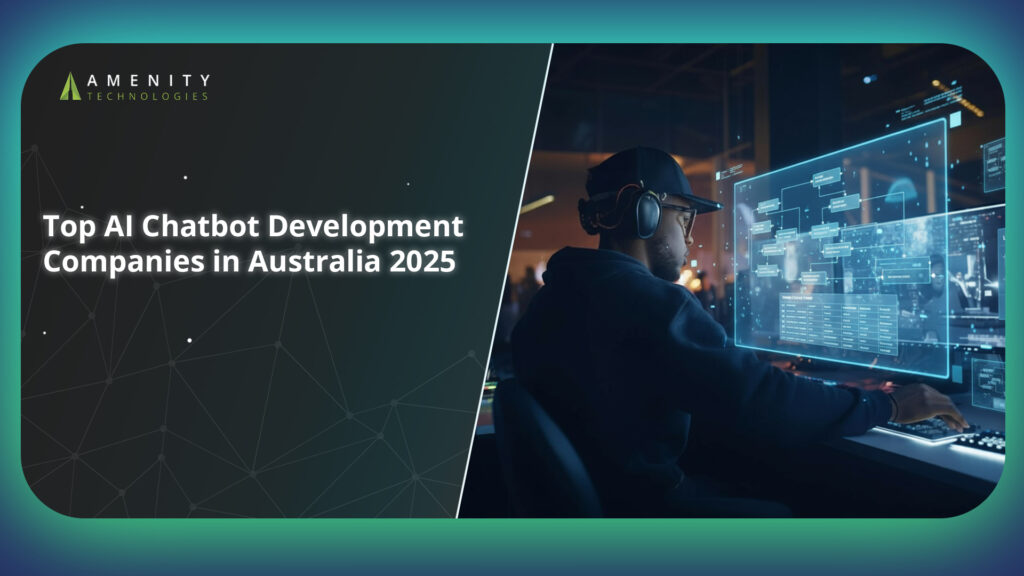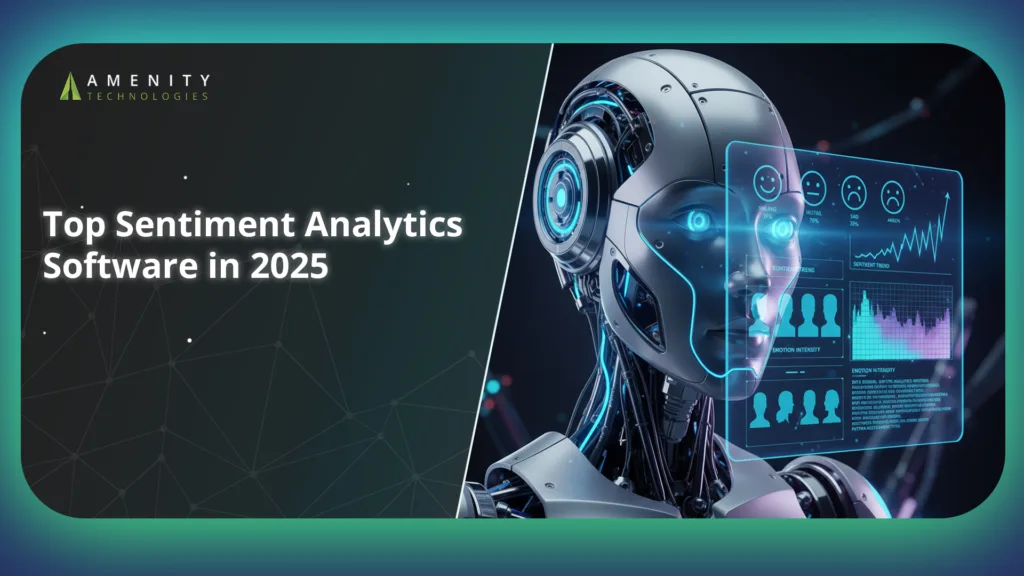Voice interactions are becoming standard across industries. Reports show that over 20.5% of internet users worldwide now use voice search regularly, and more than 8.4 billion voice assistant devices are expected to be in use by 2025.
Yet, many businesses struggle to deliver a smooth, natural voice experience. Users expect instant, human-like responses, but inaccurate speech recognition, long processing delays, or poor dialogue flow often create frustration.
That’s where an effective AI voice chatbot comes in. Built with advanced voice recognition AI and speech-to-text AI, these systems handle real-time conversations and execute actions through connected platforms or IoT devices. When designed well, they lower support costs, improve accessibility, and increase engagement across customer touchpoints.
This guide explains what drives the rise of AI voice chatbot adoption, how much development costs in 2025, and which platforms offer the best value for scalable voice automation.
What’s Driving Growth in AI Voice Chatbots in 2025?
The demand for AI voice chatbots is increasing as organizations look for more intuitive and efficient ways to interact with users. Several technological and behavioral factors are fueling this shift. Improvements in voice recognition AI, the rise of connected devices, and changing user expectations are shaping how companies deploy conversational systems. Let’s look at the primary trends behind this growth.
1. Advances in Speech Recognition & Language Models
Recent improvements in speech-to-text AI have made chatbots faster and more accurate than ever. With newer automatic speech recognition (ASR) systems such as OpenAI Whisper and Google’s Universal Speech Model, transcription accuracy for conversational speech has surpassed 95% in supported languages. This level of precision allows AI voice chatbots to interpret slang, tone, and regional accents more effectively.
Large Language Models now integrate directly with voice data, enabling AI-powered voice agents to generate context-aware responses in real time. Few-shot and zero-shot learning methods have also reduced training costs and improved adaptability, letting teams deploy new voice intents with minimal data.
2. Multimodal & IoT Device Interfaces
Another major factor is the integration of voice with IoT. Modern voicebot platforms connect seamlessly with IoT device management companies that handle smart appliances, wearables, and industrial systems. This connection allows users to issue hands-free commands, control machines, and receive updates through natural speech.
Smart homes, connected cars, and manufacturing plants increasingly depend on AI voice chatbots for real-time monitoring and automation. For example, a worker can instruct a factory robot or a home user can adjust lighting through spoken requests. As voice automation services extend to more devices, voice becomes the default interface for everyday tasks.
3. Rising Customer Expectations for Voice UIs
Consumers now expect brands to provide smooth, conversational experiences. In customer service, conversational AI voice bots reduce hold times and improve first-call resolution. In retail and travel, they assist with bookings and personalized recommendations.
This behavioral change pushes enterprises to integrate customer service voicebots and call center voicebots across their operations. Voice interfaces simplify interactions, improve accessibility, and make technology feel more human; a reason adoption continues to grow across every sector.
Key Benefits of Using AI Voice Chatbots
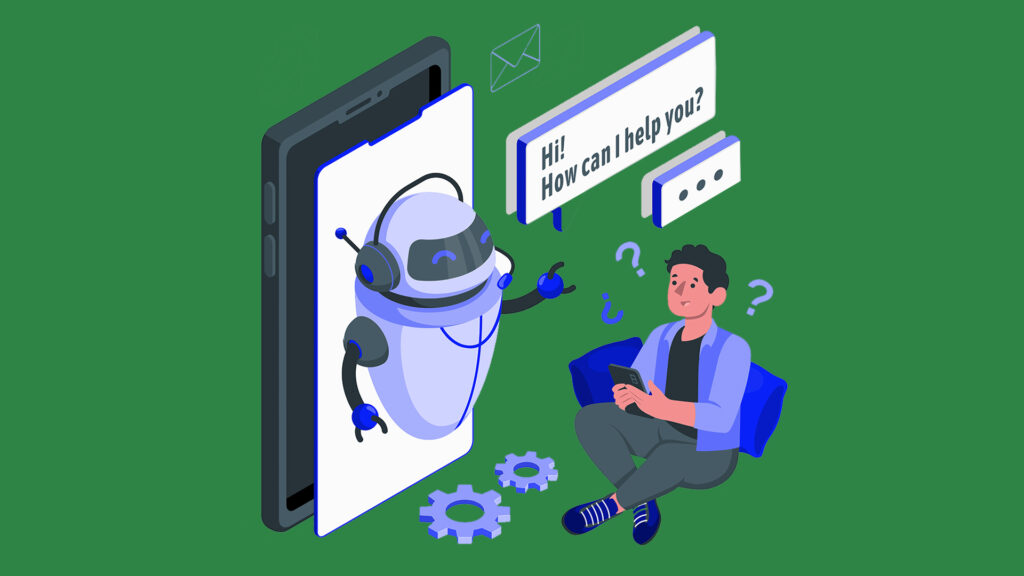
Organizations are turning to AI voice chatbots to improve user engagement, lower costs, and deliver faster responses. These intelligent systems are no longer limited to simple voice commands; they’re becoming strategic assets that enhance both customer experience and operational efficiency. Here’s how businesses are gaining value from voice-driven automation.
1. Faster and More Natural Customer Interactions
AI voice chatbots process requests instantly and respond in natural speech, cutting down wait times and improving communication flow. This creates smoother conversations that feel less mechanical and more human-like. Whether it’s handling customer support queries or scheduling appointments, voice-based interaction simplifies the process for both users and employees.
2. 24/7 Support and Higher Availability
Unlike human agents, AI voicebots operate round the clock. They can answer common questions, handle basic troubleshooting, or route complex cases to live agents without downtime. This ensures that customers receive consistent support regardless of time zone or workload, leading to higher satisfaction rates and reduced call center pressure.
3. Cost Efficiency and Workforce Optimization
Deploying AI-powered voice chatbots helps businesses reduce operational expenses by automating repetitive queries. Gartner predicts that by 2026, AI automation will cut customer service costs by up to 20% for enterprises that adopt it effectively. Voicebots also free up agents to focus on high-value tasks, improving team productivity without expanding headcount.
4. Personalized and Context-Aware Conversations
Through integration with CRMs and internal databases, AI voice assistants can instantly access user history, preferences, and recent activity. This allows them to offer personalized recommendations, confirm previous orders, or remember user-specific instructions. Such contextual understanding makes interactions more relevant and meaningful, strengthening long-term customer relationships.
5. Seamless Multilingual and Omni-channel Support
Modern AI voicebots are equipped with multilingual capabilities, enabling them to converse in multiple languages without switching systems. They can also work across different channels, from IVR systems and mobile apps to smart speakers and websites, maintaining a consistent tone and context. This unified experience is particularly valuable for global businesses serving diverse audiences.
Cost Breakdown: How Much Does an AI Voice Chatbot Development Cost?
Building an AI voice chatbot involves several cost layers, from design and development to deployment and maintenance. The total investment depends on the project’s scale, complexity, and integration requirements. Let’s explore how pricing varies between MVP and enterprise-grade implementations, along with key cost drivers and ongoing maintenance expenses.
MVP Tier vs Enterprise-Grade Deployment
For small businesses or pilot projects, a minimum viable product (MVP) version typically ranges from $10,000 to $20,000. These chatbots cover basic functions such as answering FAQs, handling single-language interactions, or performing simple task automation.
In contrast, enterprise-grade AI voice chatbots with multilingual support, real-time integrations, and advanced analytics can range from $80,000 to $150,000 or more. Such deployments cater to large organizations that need scalable, secure, and compliant systems integrated with CRMs, APIs, or cloud platforms.
Cost Drivers & Variable Components
Several factors influence AI chatbot development costs, and understanding them helps businesses plan more accurately.
- Speech Models / ASR Engine Licensing: Licensing advanced automatic speech recognition (ASR) engines like Google Cloud Speech-to-Text or Amazon Transcribe can significantly affect pricing.
- Language & Dialogue Complexity: The more languages, accents, and intents supported, the higher the development cost due to increased AI training needs.
- Integration Requirements: Connecting the chatbot with CRMs, APIs, or backend systems adds development time and cost, especially when handling sensitive customer data.
- Voice UI Design & Persona: Crafting a consistent voice persona and natural-sounding tone requires specialized design expertise and testing across dialects.
- Testing, Security, and Compliance: Projects in sectors like healthcare or finance need additional security layers and compliance audits, which further increase total costs.
Ongoing Costs & Maintenance
After deployment, AI voice chatbots require regular updates to remain accurate, secure, and responsive.
- Model Retraining & Drift Correction: Continuous AI model tuning ensures chatbot responses stay relevant as language patterns evolve.
- Hosting, Compute, and Usage Costs: Cloud hosting and voice compute usage add recurring expenses, especially for high-volume voice interactions.
- Logging, Analytics, and Error Correction: Monitoring logs and fixing dialogue errors improve long-term reliability while maintaining user satisfaction.
Use Cases Where AI Voice Chatbots Shine in 2025
The demand for AI voice chatbots has surged as businesses look for faster, more natural, and scalable customer interactions. These chatbots are not just about convenience; but they are now central to automation, personalization, and real-time decision-making across industries. Let’s explore where they are making the biggest difference in 2025.
1. Contact Center & Customer Support Automation
Contact centers are among the largest adopters of AI-powered voice agents. These bots handle high call volumes by answering FAQs, routing calls, and performing triage before escalating to human agents. This reduces wait times, improves first-call resolution, and lowers operational costs.
Many customer service voicebots now include emotion detection and contextual understanding, allowing them to maintain a calm, empathetic tone even during high-stress interactions. They also sync with CRM systems to access customer histories, ensuring continuity and personalization without needing human intervention.
2. Voice Commerce & Voice Ordering
Voice commerce is reshaping how people shop. From ordering pizza to booking laundry services, AI voice chatbots allow customers to complete transactions with simple voice commands. Integrations with payment gateways, loyalty programs, and inventory databases make these experiences seamless.
Retailers and voice bot solution providers are using speech-to-text AI and voice recognition AI to enhance accuracy and reduce order errors. As a result, businesses can drive repeat purchases and simplify checkout experience all hands-free.
3. Smart Home & IoT Device Control
With smart homes and wearables becoming mainstream, AI voice chatbots are taking on a bigger role in IoT device management. Users can control lights, thermostats, or appliances using natural voice commands without needing to touch a screen.
IoT device management companies are now embedding voice interface AI into connected devices, creating unified ecosystems where the bot acts as a bridge between humans and machines. This fusion of voice automation services and IoT makes daily routines more intuitive and accessible.
4. Voice Agents in Healthcare, Banking & Field Services
Industries that rely heavily on communication, like healthcare, banking, and field services, are also turning to AI voice chatbots. In healthcare, they assist with appointment scheduling, symptom triage, and follow-up reminders. In banking, they support balance inquiries, fraud alerts, and conversational transactions.
For technicians and on-site workers, voice assistants simplify task reporting and data retrieval while keeping their hands free. These AI-powered voice agents improve accuracy and speed while reducing operational friction in the field.
Top Platforms & Tools to Build AI Voice Chatbots in 2025
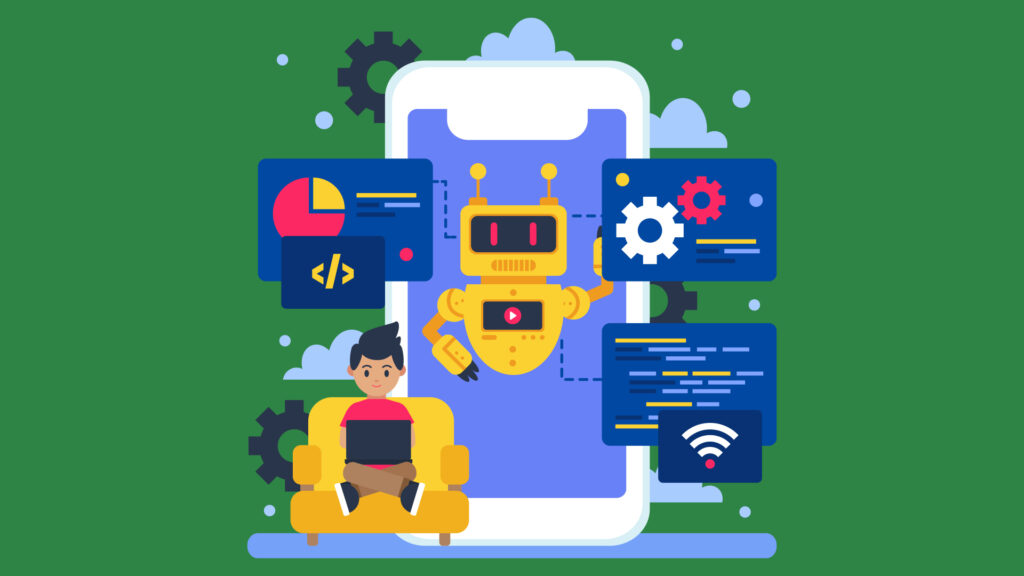
Building an AI voice chatbot today is easier than ever, thanks to a range of mature platforms and voice bot solution providers offering scalable, feature-rich ecosystems. The right choice depends on your technical needs, use cases, and integration requirements. Below is an overview of the leading voicebot platforms and what sets them apart in 2025.
Popular Voice / Conversational AI Platforms
Mainstream voice automation services like Dialogflow, Amazon Lex, Botpress, Kore.ai, and Watsonx.ai continue to dominate the market. These platforms combine voice recognition AI, speech-to-text AI, and language model integration to deliver conversational accuracy and context retention.
Each offers distinct strengths:
- Dialogflow by Google stands out for multilingual support and seamless integration with Google Cloud tools.
- Amazon Lex connects effortlessly with AWS and Alexa environments, ideal for IoT and retail voice applications.
- Botpress provides strong open-source flexibility, preferred by developers who need custom workflows.
- Kore.ai focuses on enterprise-grade voice UI development and omnichannel orchestration.
- Watsonx.ai emphasizes natural speech understanding and enterprise security.
The choice largely depends on customization, voice latency, pricing tiers, and how well the platform supports your backend stack.
Specialized Voice / Contact Center Tools
For businesses prioritizing call automation and customer service, specialized voice-first platforms are often the better fit. Solutions like CXone Virtual Agent Hub and NICE Voice Bot are purpose-built for enterprise communication.
These systems integrate AI-powered voice agents directly into call center voicebot environments, offering real-time transcription, routing, and intent handling. Their edge lies in native telephony support, compliance features, and built-in analytics for performance optimization.
Companies adopting these platforms typically see faster deployment and lower integration overhead since the solutions are tailored for high-volume contact centers.
Criteria for Choosing a Platform
Selecting the right voicebot platform depends on a few key technical and operational considerations:
- ASR Accuracy and Latency: Look for platforms that handle diverse accents and dialects with minimal lag.
- Multi-Language Support: Essential for brands serving multilingual regions or global markets.
- Integration and Extensibility: Ensure compatibility with APIs, SDKs, CRMs, and IoT systems for seamless communication.
- Pricing Structure: Evaluate usage-based models (per minute or per call) to predict long-term costs.
- Analytics and Debugging: A strong platform should offer conversation tracing, logs, and performance dashboards for continuous improvement.
A reliable platform not only improves speech accuracy but also streamlines development and scaling. Businesses that invest in the right tools can reduce deployment time and deliver a smoother conversational experience.
How Amenity Technologies Can Help with AI Voice Chatbot Development?
We design and deliver AI voice chatbot development solutions that combine precision, reliability, and natural user interaction. Our teams handle the full technical stack, from speech recognition to backend integration, so every voice experience performs smoothly under real-world usage.
- Expertise That Defines Voice AI Partnerships
Voice technology requires seamless coordination between natural language processing, speech engines, and user experience. Our engineers address challenges related to latency, interpretation accuracy, and conversation flow to prevent user frustration and ensure consistent performance across devices and languages.
- Comprehensive Support for Voice Chatbot Projects
We cover every phase of development, including design, model integration, dialogue flow creation, and persona tuning. Our teams manage backend systems, CRM connections, and API integrations while implementing reliable error-handling mechanisms for stable performance.
- Proven Value and Client Benefits
We maintain full cost transparency and structured delivery schedules that align with your project roadmap. Clients gain access to tested voice models, reusable modules, and intelligent voice agents that reduce time-to-market. Our ongoing optimization, monitoring, and retraining ensure lasting accuracy and engagement quality.
Conclusion
Voice interfaces are becoming standard in how users interact with technology in 2025. Businesses investing in AI voice chatbots are seeing measurable gains in speed, automation, and customer satisfaction. The development cost depends on the scope, ranging from an MVP priced around $10,000 to complex multilingual solutions exceeding $100,000, but the efficiency returns often justify the investment.
Partnering with experienced voice bot solution providers helps reduce errors, improve conversational accuracy, and accelerate go-live timelines.
Whether integrated into IoT systems, customer support, or enterprise workflows, a well-built AI voice chatbot delivers smoother interactions and stronger engagement.
If you’re ready to develop or upgrade your voice solution, Amenity Technologies can help you design, deploy, and optimize it for real-world performance. As a part of IoT services, you can hire developers who can help in bridging the talent gap in your team and provide the necessary insights and expertise to deploy an apt voice bot.
FAQs
Q1: What’s the difference between an AI voice chatbot and a text chatbot?
A voice chatbot understands spoken input using speech-to-text AI, processes intent, and responds with synthesized speech. It handles tone, interruptions, and latency, unlike text-based bots that process typed input only.
Q2: How much does it cost to build an AI voice chatbot MVP in 2025?
An MVP typically costs between $10,000 and $20,000. Full-scale enterprise or multilingual AI voice chatbots can range from $80,000 to over $150,000, depending on features and integrations.
Q3: What are common pitfalls in voice chatbot projects?
Frequent issues include inaccurate voice recognition AI, latency in responses, poor handling of accents or dialects, weak fallback flows, and insufficient retraining or performance monitoring.
Q4: Which platforms are best for voice chatbot development today?
Top choices include Dialogflow, Amazon Lex, Botpress, Kore.ai, and CXone’s voicebot platform. These tools offer strong customization, integration capabilities, and support for AI-powered voice agents.
Q5: Can voice chatbots integrate with IoT or smart devices?
Yes. They can monitor, control, and communicate with IoT devices using voice interface AI, creating a natural and efficient way to manage connected environments.
Q6: How do you maintain accuracy and performance over time?
Continuous optimization is key. Teams track interactions, retrain speech models, review error logs, and update dialogue flows to ensure consistent accuracy and responsiveness.


